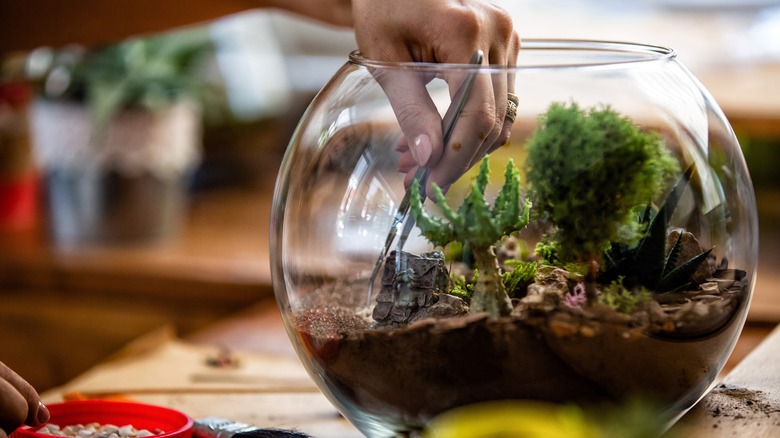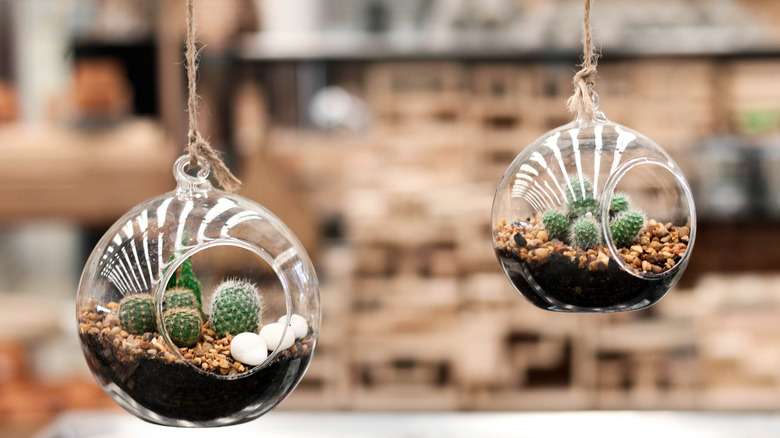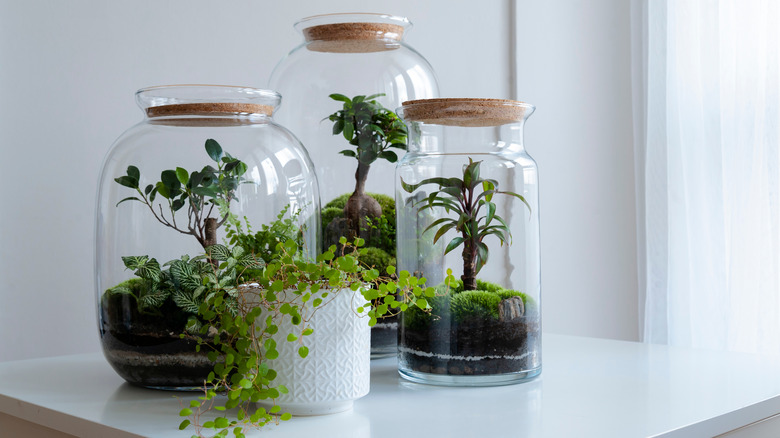The Different Types Of Terrariums (And Which Is Right For You)
Terrariums are one of the most popular indoor planters for the unique touch they add to a space. These miniature gardens come in encasements of glass or plastic that can be either opened or closed. The main difference between these two types is the type of plants they contain because it will depend on the atmosphere of your home and where the terrarium will be kept.
Typically, open terrariums are better for dry climates, while closed terrariums are better for humid climates. Open terrariums are also easier to maintain compared to closed terrariums. The type that is right for you ultimately boils down to the type of plants you want to have, the level of moisture in the air and airflow in the environment, and how much time you're willing to invest in cultivating your tiny garden. As you consider the next terrarium to add that natural touch to your space, here is a deeper look into both types.
Open terrariums
Open terrariums have an opening in their containers to enable greater airflow because they are quite similar to regular indoor plants. They are great in drier environments, which is why some of the best plants for them are those that thrive in the desert, like succulents and cacti. These open glass plants are more likely to be used for decorations like hanging or tray terrariums. Air plants are the best type to use in a hanging terrarium because they mainly need air to thrive.
As mentioned, the level of attention and maintenance varies for both types. Open terrariums typically require less supervision. They can be kept in a spot that receives direct sunlight and can be watered as needed to prevent the soil from drying out. The best way to water them is by spraying so the soil gets moist but not soaked. Once every three to six weeks is a good schedule.
Closed terrariums
Closed terrariums have lids that trap moisture and create a humid environment. They function more like an ecosystem because the water evaporates in the heat of the day and settles at the bottom when it's cool at night. They are better suited for plants that thrive in high humidity, like starfish plants, ferns, mosses, and tropical plants. Indirect light is best for closed terrariums so the sun doesn't create too much heat in them. They also don't need a lot of watering since the moisture is continually recycled within the container. Watering once a month is generally okay.
They do, however, need more attention than open terrariums to ensure that the plants don't root from too much moisture or similar issues. You should clean your closed terrarium roughly every week when there's a buildup of algae or when leaves need to be pruned. If you don't want to clean out dead leaves, you can add microfauna to create a bioactive terrarium so those pieces can decompose like they would naturally.


